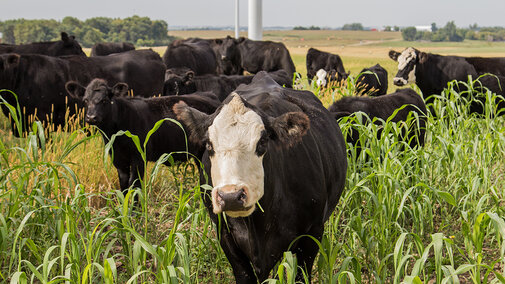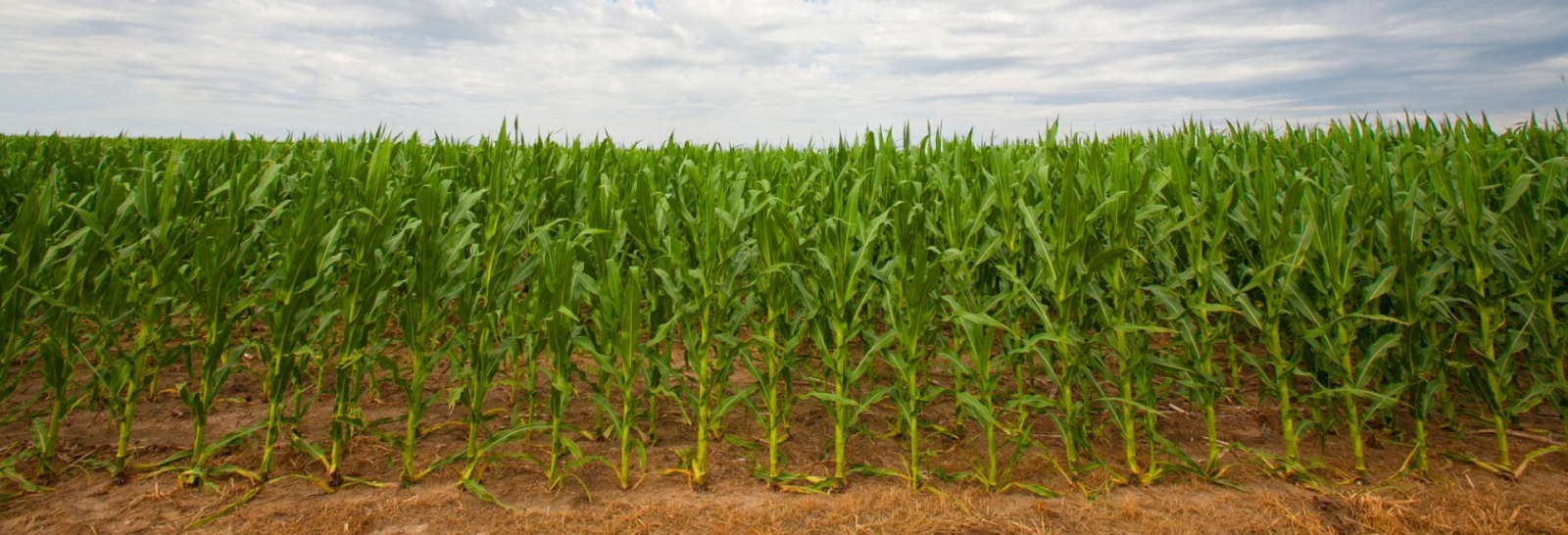Small Grain Forage Harvest
As we work our way through spring, many small grains are maturing fast and nearing harvest windows. Are you ready to make the most out of these forage options?
Producers seeking hay should consider the animal being fed and feeding method before harvesting. For young growing cattle, small grain hay should be cut in the boot stage or as soon as possible following heading to ensure higher protein and energy content. Mature cow and feedlot managers may consider delaying their forage harvest until the hard dough development stage to increase forage quantity, since these cattle can utilize lower quality forage than younger beef animals. Small grains with awns like rye, triticale and wheat can be a concern at later maturities. Grinding the hay, feeding in ration with additional moisture, or using an awnless (beardless) variety can reduce this risk.
No matter how you harvest, delaying can mean higher productivity. Nebraska studies have shown an eight ton as harvested feed per acre increase between harvest at boot stage and soft dough on irrigated fields. The trade-off for delaying forage harvest was an 8% drop in crude protein content.
Another concern for silage harvesters is proper moisture when packing. A statewide study looking at 17 Nebraska producers found the biggest loss of small grain silage quality was packing too wet despite almost all producers having wilted the crop before packing. Silage packed too wet had almost three times the energy loss that those packed at proper moisture content. Shoot for 70-72% moisture for proper packing. Study survey data showed producers who harvested at boot, heading, or pollination stage and wilted for 16 to 24 hours appeared more likely to achieve target moisture levels.
Planting Summer Annuals
Now is the time to plant summer annuals, especially due to welcome rains. Summer annuals are typically warm-season grasses planted in western Nebraska prior to June 1 to provide grazing or harvested as feed for beef cattle.
Warm-season species such as sudangrass, sorghum-sudangrass, teff, pearl millet, foxtail millet and forage sorghum (also named cane, sorgo or “feed sorghum”) can complement cool-season plants.
Cool-season forages peak their production in May and early June when summer temperatures rise, while summer annuals peak their production in July and August. So how do producers know which species among the seven types to plant? The answer depends upon their intended usage.
For example, if producers desire to extend their pastures due to drought, then sudangrass or pearl millet might be good choices. Both grow rapidly and have high leaf to stem ratios, along with less fall grazing risk for prussic acid poisoning.
If producers are wanting more hay or green chop production, then sorghum-sudan hybrids or pearl millets might provide good yields when cut two or three times. On sandy soils, foxtail millet might be better for summer hay production, since it dries fast and does not regrow after cutting to preserve moisture for subsequent crops. Conversely, Japanese millet can tolerate wet soils and be cut for hay or grazing.
Cane hay has traditionally been grown for high tonnage, but it usually has lower feed value and dries slower than hybrid sorghums and millets. Teff provides excellent quality as a soft, leafy forage — especially appealing for horses — but is lower tonnage compared to other summer annuals.
Nebraska Extension on-ranch forage research launched in 2024 near Arthur, Mullen, Hyannis, Thedford and Valentine is comparing irrigated summer annuals such as forage corn, Group 5 forage soybeans, hybrid sweet sorghums, silage mixes, hybrid pearl millet and brown mid-rib forages. More information will be shared during UNL at-location field tours during the first week of August.
More information regarding planting summer annuals is available on CropWatch.
Livestock Water on Pasture
As late spring and summer temperatures begin to heat up and cattle are on pasture, it’s important to make sure there is adequate water for livestock. How much do cattle need and where should it come from?
The water requirements for cattle depends on their size, class and environmental conditions. High humidity and greater temperatures also increase water demand. A study at the University of Georgia lists water requirements for days when the daily high temperature is 90°F. With these conditions, growing or lactating animals need two gallons of water per 100 pounds of body weight. This means a 1,400-pound lactating cow will need close to 28 gallons of water daily with 90°F daily highs. If the calves are 250 pounds, they will need about 5 gallons. Again, some of the water will come from grazed forage. Make sure water tanks or water points are accessible for smaller calves.
Having fresh, clean water should also be a priority. Whenever dry conditions occur or especially in later summer, water quality from water sources such as dugouts or ponds and dams may not be ideal. The ability to have water close by should also be a goal, although sometimes it’s simply not possible. More water locations can help meet the water demand but could also help grazing distribution too. Cattle will receive some of their daily water requirements when they are consuming high moisture feedstuffs, such as fresh forage when grazing pasture, silages or green chopped feeds. Feeds that are high-energy increase the water requirement.
Keep an eye on water this summer and make sure livestock have enough, good quality water available.

